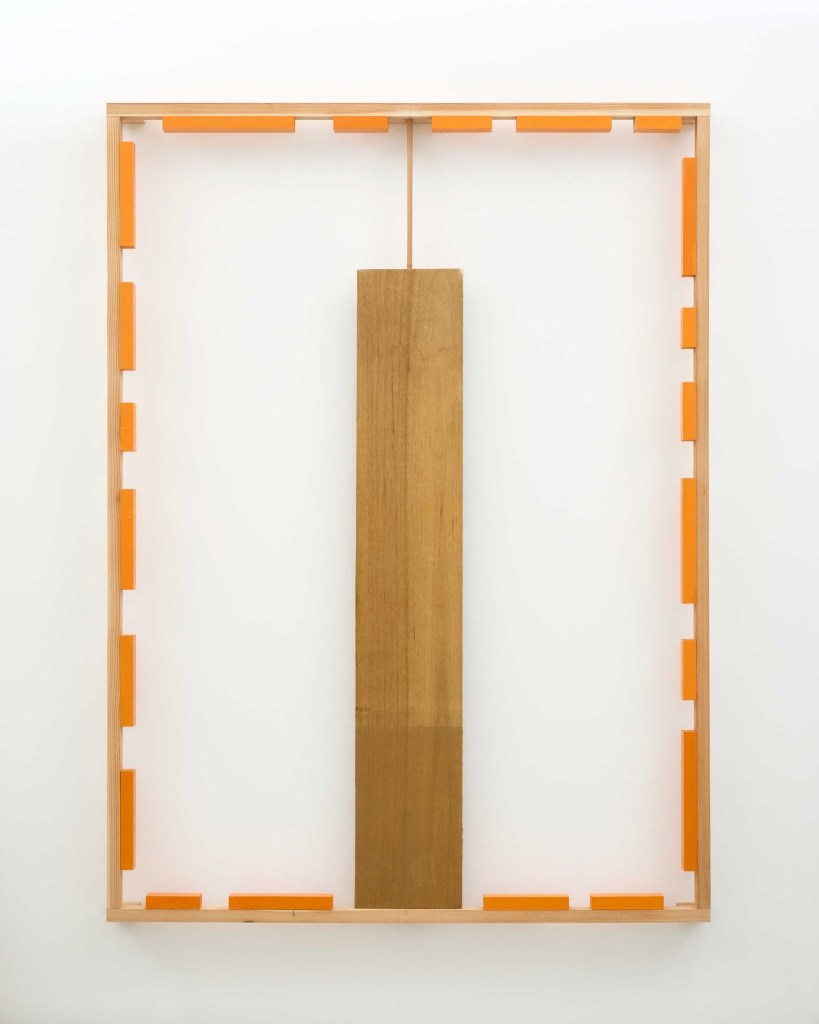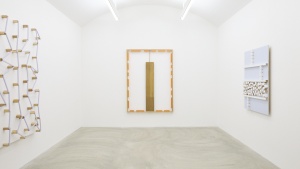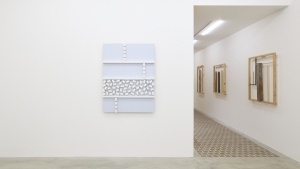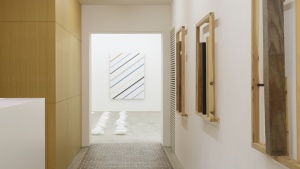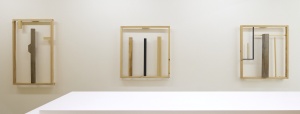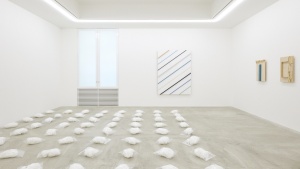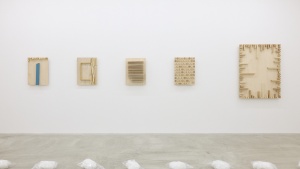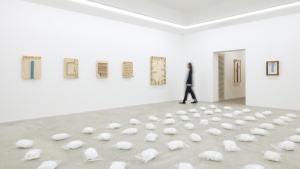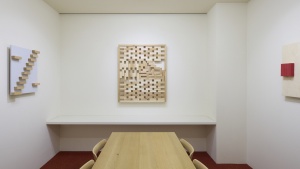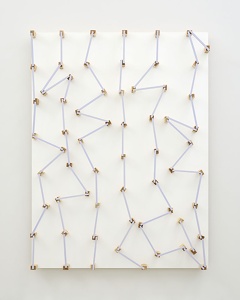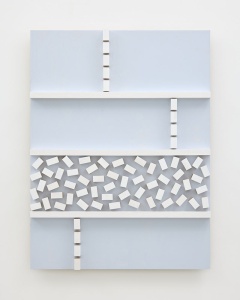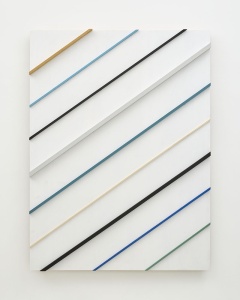Tomio Koyama Gallery Roppongi is pleased to present Kishio Suga’s solo exhibition, “There Is Neither Such Thing as Being, Nor Such Thing as Not Being.” The artist has continued to actively present new works at the gallery since 2015, with this exhibition marking his ninth solo showcasing.
The gallery also publishes a catalogue in correspondence to each solo exhibition, this latest installment of which will include an essay by Kenjiro Hosaka, Director of the Shiga Museum of Art.
【About Kishio Suga and His Works: Opening Up New Horizons in Art Through His Unique Perspective and Sharp Sensibility】
Kishio Suga (1944-) is a central member of the Mono-ha art movement that took place from the late 1960s to the 1970s. For over 50 years since, he has been creating works inspired by his unique perspective on the world and sharp sensibility, opening up new frontiers as a leading artist of postwar Japanese art of his time.
Suga produces works of art by arranging commonplace objects such as wood, stone, metal, and rope, at times in a state of harmony, and at times in confrontation with one another. Rather than allowing objects to exist independently, Suga express the interdependence, difference, and complexity of “things” and “sites,” and “things” and “things.” In doing so, he brings out the unique presence of these “things” to a maximum extent, thereby presenting viewers with new scenes and situations that have never before been seen.
Suga states, “I consider a stone, to the extent to which I think to myself, ‘perhaps this isn’t a stone at all’.” As exemplified by these words, a first and important step in his production process is to thoroughly reexamine the meaning of things and the preconceptions that are attached to them. By turning his attention to “things” themselves, which were nothing but mere materials for artworks, as well as to “humans” who perceive those things, and to the “nature” that surrounds them, Suga regards all things as being in an equal relationship with one another, and that such is the universal way of the world. Suga’s progressive ideas were already established when he was in his twenties during the early stages of his artistic career, and the continued deepening of his original thoughts in resonance with the philosophies of landscape architect Mirei Shigemori and the Kyoto School, and the Indian philosophical doctrine of Madhyamaka (“the doctrine of the void”), has served to instill the world of his work with a sense of unhampered contemporariness.
Suga also receives high international acclaim for his works, which are housed in numerous museums throughout the world including, the Centre Pompidou, the Tate Modern, M+, Guggenheim Abu Dhabi, the Scottish National Gallery of Modern Art, The National Museum of Modern Art, Tokyo, and the Museum of Contemporary Art, Tokyo. He has participated in more than 400 exhibitions in Japan and abroad, and is also scheduled to present a large-scale solo exhibition “Corresponding Space” at the He Art Museum in China from April 8th to July 21st, 2024. (*Please see here for further information on his list of major exhibitions.)
【About the Exhibition: Art is About Acknowledging “What is There”】
Suga has written the following statement in correspondence to the exhibition.
―――――――――――――――――――――――――――――――――――
“There is neither such thing as being, nor such thing as not being.” “What is there” is precisely what is there. Not everything is useful or of some value. A site is a gathering of such things, which gives rise to a certain space of existence. Each thing has its own name and some kind of property or disposition, and the situational space in which these things come together manifests as the very living space which people inhabit. At the same time, there is no doubt that this is what lies at the root of the site where things exist, or in other words, what creates the nature on which these things (nameless things) rely. All things are as they naturally are. One could indeed say that it is because of this, that a single view of the world is established. To assume that all things are in the same dimension is, in a sense, in every way, a necessary and not altogether unnecessary situation. This is the “common cause” for all things. By breaking away from this causal state, each individual thing comes to exist as being different from one another, and thus becomes that which is visible.
―――――――――――――――――――――――――――――――――――
In the work Elemental Space, thin orange squares of slightly different lengths are arranged around the frame at what appears to be equal, yet are in fact irregular intervals. While the work may look the same from no matter where one views it, no two elements are identical. Furthermore, a large board runs vertically through the work’s internal space and is connected to the overall frame by a thin square bar, enabling it to embrace another dimension while creating somewhat of a curious new situation. What is also characteristic of these latest works are their pale colors. For Suga, color is that which “erases the meaning of things” and “is on par with things.” By using color here and there to erase the connotations of wood and give it a different sense of existence, he brings awareness to the nature of the world, which is connected to reality but never merges with it.
Suga describes the artist as being like a guide who offers people “a certain perspective.”
“Art is about acknowledging what there is. I’ve always said that’s all there is to it. Yet at the same time, I believe that my own “small” actions have the potential to bring out something extraordinary. Nature, which serves as the material, indeed carries with it a vast background. Should I attempt to work with something that immense, I might be able to give rise to something.”
“‘Things are as they are.’ I think it is important to acknowledge existence as it is, and to present your own narrative, regardless of whether it may seem competent enough. Because what is really comes down to, is how that person lives their life.” *1
We cannot make sense of the world without perceiving various connections that are not visible to the eye. Suga instills us with a new awareness and shows us how to richly interact with the world through art. We hope many viewers, as those living in the same day and age, will take this opportunity to witness Suga’s latest works that are grounded by his unfading sense of freedom.
*1(Hiroyasu Yamauchi, “Visiting Kishio Suga’s Studio: “There are Many Motions, Acts, and Conditions in Everyday Life that can be Developed into Art,” Bijutsu Techo [online edition], February, 2022)
—————————————————————————————–
For press inquiries, please contact: press@tomiokoyamagallery.com (Makiko Okado)
—————————————————————————————–

